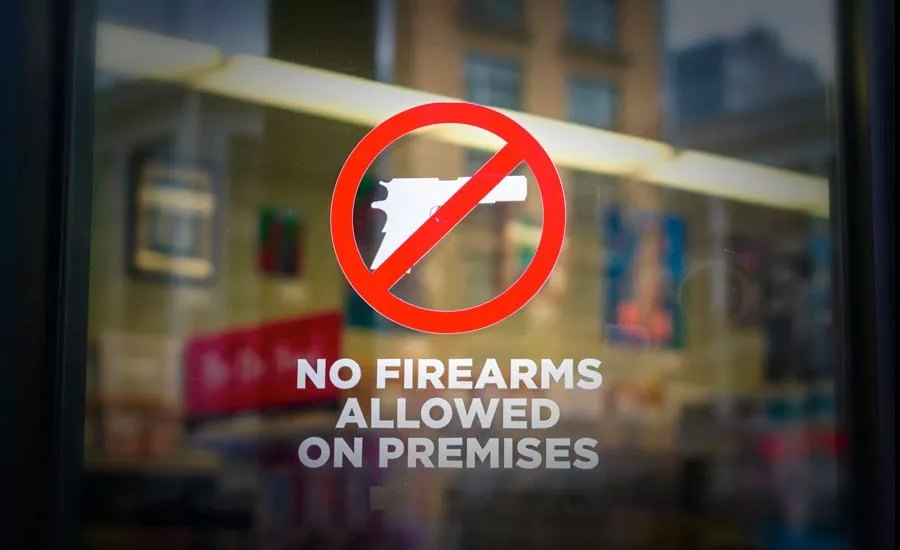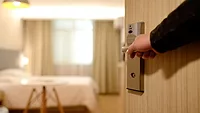Artificial intelligence provides hope for hardening K-12 schools
When it comes to gun violence, truly hardening a school requires information and a nuanced approach.

Michael Vi / iStock / Getty Images Plus via Getty Images

Peter Evans
The tragic school shootings of recent years have led to a great deal of discussion around “hardening” K-12 schools to gun violence. And, the concept of “hardening” usually conjures visions of metal detectors, armed guards, active shooter drills and any number of bullet-proof products, from windows to white boards.
Truly hardening a K-12 school system from gun violence, however, requires a more nuanced approach. First of all, disrupting the normal flow of education with pat-downs and other intrusive activity can have a detrimental effect on students by instilling the notion that they are constantly in danger, or that the school perceives them as a threat. The tradeoffs between security and the student experience need to be considered, particularly when it involves introducing more stress on kids who already have to spend too much of their childhood participating in active shooter drills. And, tighter security does not necessarily require additional disruption to normal activities.
As reported in Security, the U.S. Secret Service recently published a report that studied 67 successfully averted plots for school shootings. In each one, the most valuable tool for disrupting the plots wasn’t security hardware or armed guards. Instead, it was something you can’t even touch: information. When people came forward to report students who were making threats or behaving in a disturbing fashion, education and law enforcement officials were able to defuse the plots before they could be carried out. U.S. Secret Service Director James Murray commented on the report’s findings, saying “The takeaway from this report, and the 67 cases you are about to examine, is that when people come forward to report concerning behaviors, they can and do save lives.”
Volunteer Intelligence Isn’t Enough
As a security strategy, trusting individuals or students to come forward with information on their peers has obvious flaws. Social pressures, concerns about getting involved, concerns about inaccuracies, and other issues can impede proactive communications. As a mechanism for connecting school and law enforcement officials to potential school shooting risks, relying on students, parents and teachers as a “volunteer intelligence team” does not deliver the accuracy, scale, timeliness and levels of deterrence and protection we all want for our schools.
Since information is the single most valuable tool for disrupting potential school shootings, how can school systems increase the reach and reliability of their intelligence network beyond the current volunteer approach? As with any other operational challenge, it comes down to the effective blend of people, process and technology. And when it comes to technology, modern artificial intelligence (AI) provides some compelling capabilities.
Wrapping the School Community in a Security Fabric
There are four well-defined zones that K-12 schools need to consider when developing a security strategy: outside the building, the entryways, inside the building and, perhaps most importantly, online.
Artificial intelligence can provide a continuum of surveillance across all of these zones, effectively weaving a consolidated “security fabric” that covers the school property and extends into the online world. Let’s take a look at the different ways in which this fabric manifests itself:
-
Online – The earlier a school can disrupt an attack, the better the outcome for everyone involved. All of the attacks in the Secret Service report were disrupted at the ideation or planning stages. The best outcomes occurred when the school could intervene with a suspect student before they crossed the line into legal jeopardy. Students contemplating violence against others often reveal their intentions ahead of time, amid the bravado of social media and other digital channels.
There are AI-based applications today that can scan email, text, social media channels and more to identify warning signs of impending threats and notify school officials. This capability complements the existing “volunteer intelligence” model by giving schools an intelligence channel that is fully under their control, and that does not have any of the hesitancy to report suspect behavior that humans do. - Outside the Building – Many schools have already installed video surveillance systems to monitor parking lots and other areas outside the school. By adding AI-based video- recognition software to these, the video system can identify and alert security staff on weapons and threatening behavior (developing fights, for example) in real time. These systems also provide school resource officers and responding police with important real-time intelligence on specific threats before they arrive on the scene, so they can respond in the most effective and safest way.
-
Entryways – Most schools today limit entry to specific doors, which are often monitored by staff. In some cases, metal detectors have been installed to prevent weapons from entering the building. However, this approach can cause other issues, such as creating long lines of students waiting to get into the school in the morning – which in itself can cause new problems – and implying to students that they aren’t trusted and the school might not be safe.
AI-based weapons-scanning gateways provide a compelling alternative to metal detectors. These systems are tuned to only detect guns and knives, rather than alerting on all metal objects. Additionally, they allow students to walk freely through them, avoiding the delays caused by metal detectors. This also can reduce staffing requirements since only students suspected of carrying weapons need to be stopped for further screening. -
Inside the Building – This is another case where AI-based video-recognition software can be used with existing video surveillance cameras to detect weapons and other forbidden objects inside the school. For example, if a student shows a friend a gun he has snuck into his locker in sight of a video camera, the software will identify the weapon and alert the proper authorities.
In the case of active shooters, these systems can also provide responding law enforcement teams with detailed, real-time intelligence on the location and movement of the perpetrator. Separately, school officials can also gain intelligence through these systems on more mundane matters, such as external doors being left open, a large number of kids heading into restrooms to vape, acts of vandalism, etc. This information becomes a force-multiplier for staff, because they always know where they need to be to de-escalate problems and keep the school functioning normally and safely.
Beyond the Silver Bullet
There has been an enormous amount of hype around AI, and it would be disingenuous to say that AI provides some sort of silver bullet for protecting K-12 schools. What AI can do, however, is identify and deliver critical information to school officials and security staff at the earliest possible point. From there, the school must have the people and processes in place to effectively act on the information.
With an AI intelligence fabric in place across the four critical zones of security, school officials can receive reliable intelligence across every stage of the ideation-planning-execution threat cycle. This enables them to optimize their processes (both internal and with external partners) to effectively respond to the intelligence.
From a budget perspective, in many cases the AI will simply work with existing hardware, so “hardening” a K-12 school may not require a large investment in additional staff or the brute-force products and measures that have commonly been used until now.
The Secret Service report provides a clear picture of how impactful early intelligence is on thwarting school shooting plots. AI provides that early intelligence and the opportunity for schools to dramatically level-up their intelligence capabilities so they can end future plots before they have a chance to get off the ground, allowing for an intelligent, impactful and largely unobtrusive “hardening” of the school environment.
Looking for a reprint of this article?
From high-res PDFs to custom plaques, order your copy today!








